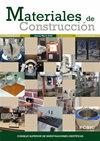Efficiency of self-healing cementitious materials with encapsulated polyurethane to reduce water ingress through cracks
IF 1.5
4区 工程技术
Q3 CONSTRUCTION & BUILDING TECHNOLOGY
引用次数: 16
Abstract
Cracks in reinforced concrete elements can cause major durability issues due do the accelerated ingress of aggressive substances. In this study, repair of cracks was addressed by incorporating encapsulated polyurethane based healing agents in the cementitious material as an autonomous healing mechanism. Capillary sorption tests showed that a high viscosity healing agent could reduce the water ingress in cracked mortar, but a large scatter in the results was found, resulting in a large range of healing efficiencies (18 – 108%). The low viscosity polyurethane showed a more complete and consistent crack healing. Healing efficiencies ranging from 95 to 124% were observed (crack width up to 295 μm). The proposed healing mechanism is very effective in blocking the ingress of water. This will enhance the durability of cementitious materials and consequently extend their lifetime.包封聚氨酯自修复胶凝材料减少裂缝进水的效率
由于侵蚀性物质的加速进入,钢筋混凝土构件中的裂缝可能会导致重大的耐久性问题。在这项研究中,通过在胶结材料中加入包封的聚氨酯基愈合剂作为一种自主愈合机制来修复裂缝。毛细管吸附试验表明,高粘度愈合剂可以减少开裂砂浆中的水分进入,但发现结果存在很大的分散性,导致愈合效率范围很大(18-108%)。低粘度聚氨酯显示出更完整和一致的裂纹愈合。观察到愈合效率在95%至124%之间(裂纹宽度高达295μm)。所提出的愈合机制在阻止水进入方面非常有效。这将提高胶结材料的耐久性,从而延长其使用寿命。
本文章由计算机程序翻译,如有差异,请以英文原文为准。
求助全文
约1分钟内获得全文
求助全文
来源期刊

Materiales de Construccion
工程技术-材料科学:综合
CiteScore
3.20
自引率
9.50%
发文量
38
审稿时长
>12 weeks
期刊介绍:
Materiales de Construcción is a quarterly, scientific Journal published in English, intended for researchers, plant technicians and other professionals engaged in the area of Construction, Materials Science and Technology. Scientific articles focus mainly on:
- Physics and chemistry of the formation of cement and other binders.
- Cement and concrete. Components (aggregate, admixtures, additions and similar). Behaviour and properties.
- Durability and corrosion of other construction materials.
- Restoration and conservation of the materials in heritage monuments.
- Weathering and the deterioration of construction materials.
- Use of industrial waste and by-products in construction.
- Manufacture and properties of other construction materials, such as: gypsum/plaster, lime%2
 求助内容:
求助内容: 应助结果提醒方式:
应助结果提醒方式:


